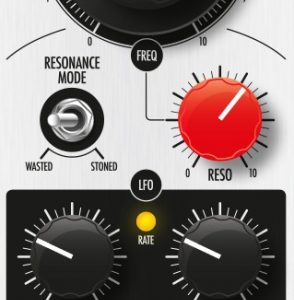Drezno II
£260.00
3 in stock
Description
BINARY CONVERSION KOMPUTOR MODEL OF 1989
Drezno II [ˈdrɛznɔ] is a component of the Leibniz Binary Subsystem, a family of 8-bit signal processing devices offering comprehensive manipulation of signals and voltages in the digital domain. Drezno II is the input/output front-end of the system consisting of an analog-to-digital converter (ADC) and a digital-to-analog converter (DAC). In other words, it converts from continuous analog signals to a stream of digital numbers from 0 to 255 (the binary data) and from a stream of digital numbers to an analog signal. These numbers are transmitted using eight parallel binary (two-state, on/off) signals that may be gates, clocks, rhythms, etc. Even on its own, Drezno II can be used for waveshaping of analog signals and voltages based on their binary representation. The two halves of the module may be used entirely independently or linked through the data ribbon cable, possibly with other Leibniz modules installed between the ADC and the DAC.
Drezno II is an upgraded version of the original Drezno released in 2017. It uses new converters of much higher resolution, which results in a lower noise floor and higher accuracy down to the lowest bit. It can be used for quantizing pitch voltages. Potentiometer ranges are factory calibrated for the chromatic scale within 10Vpp (128 semitone steps) and 20Vpp (256 semitone steps).
To better understand the device and avoid common pitfalls, we strongly advise the user to read through the entire manual before using the module.
FEATURES
- Universal analog-to-digital and digital-to-analog converter for processing analog signals in the 8-bit digital domain
- Suitable for audio and CV processing with no aliasing
- Component of the Leibniz Binary Subsystem
NEW FEATURES
- Calibrated quantization
- Switched voltage range
- Vastly improved accuracy and noise floor
TECHNICAL SPECS
- Width: 12hp
- Depth: 31mm (including the ribbon cable and bracket)
- Current draw: +70mA/-40mA
- Reverse power protection





